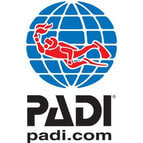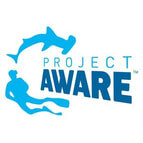PADI solo diving – really???
PADI Self-reliant
Such a great course
Remember back to your PADI open water course and you will recall your dive instructor stressing the importance of a dive buddy. A plethora of reasons were drilled into us as newly certified scuba divers the we should never dive alone.
You need to be close to your dive buddy
You need to be no further than a fist pump away from your dive buddy
You need to look after your dive buddy
Your dive buddy is there to assist you in an emergency
You and your dive buddy will do a buddy check (remember BWRAF?)
So, what is this solo diving all about and would PADI really consent to such a thing? And the answer to that burning question is yes! PADI does not call it solo diving though, it known as a PADI self-reliant scuba diver certification. That differentiation in names makes a lot of sense.
Whilst with this certification some dive operators “might” allow you to go diving without a buddy and therefore being on your own, the training is more about being self-reliant as a scuba diver instead of exploring the underwater world on your own.
First let’s have a look who this certification could and should appeal to:
The underwater photographer
Let us look at the professional photographers first. These are the PADI Divemasters or PADI Instructors who swim from group to group and take those awesome underwater shots of your first introductory dive or certified diving experience. Let’s face it the Go Pro your buddy has is a bit limited and these professionals make that picture look a hundred times better than that snap taken by your buddy on the Go Pro. I bet your underwater Facebook Profile picture was taken by one of those underwater photographers.
So, these guys and girls don’t have a buddy to rely on and therefore they need to be trained in making sure they can rely on themselves in so far as air supply and other situations.
What about the not so professional underwater photographer? You know that diver…. This is the one that comes onboard with an underwater camera set up that costs more than your car did. This is the diver that joins your group and is looking for macro shots of that nudibranch always falling behind. This is usually the scuba diver that the Divemaster dreads to look after as they make the whole group wait for them to take that perfect underwater photo and then after 10 minutes into the dive is still not following the group. Being self-reliant for this kind of scuba diver is a great way of being safety conscious.
The PADI Divemaster
The PADI pro that guides your dives on your holiday. This is the dive guide who knows all the secret spots and how to find that giant clam, the clown fish (also known as Nemo), that secret hiding spot for the octopus and most importantly how to navigate back to the dive boat without getting lost. I hear you say, that this PADI pro is not diving on their own, as they have a whole group of scuba divers with them. This is true, but are they not better off at being self-reliant than having to rely on a recreational scuba diver who dives 4 times a year?
Your PADI Instructor
Remember him or her from your PADI openwater course? Here we are on openwater training dive number one. The first time your PADI instructor took you diving in the ocean. Again, they are not there on their own, but maybe it is a bit too much to ask for you as a student, on your first training dive, to help your instructor out in case of an emergency?
You – the recreational diver
It does not mean that you have to ditch all your dive mates, but being a PADI self-reliant diver means that you can look after yourself. After all scuba diving is a social activity and diving with a buddy is a lot of fun. How is anyone going to believe you that you saw that Hammerhead shark when there is no one with you? Being a PADI self-reliant diver makes you a more competent scuba diver.
So… what is involved in becoming a PADI self-reliant diver?
Like anything there is some dive theory to learn and then there are some three openwater training dives where you learn about your air consumption, how to carry a redundant air supply and using it. Double checking and triple checking our equipment on our own. You get to set your SMB and lots of other fun things.
For course information see PADI self-reliant diver course or contact me at kai@diveinstructor.com.au
Here is another great article about the solo diving course.













